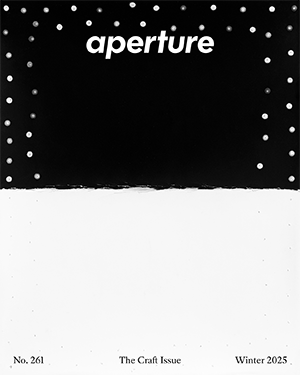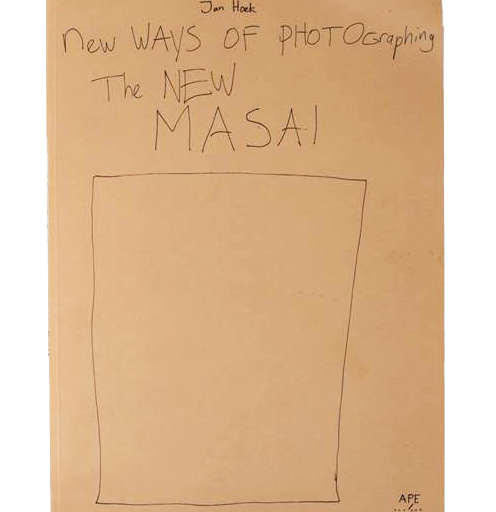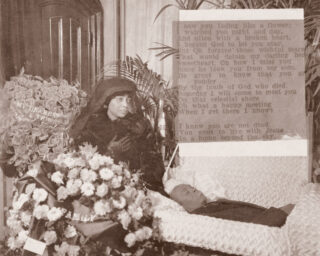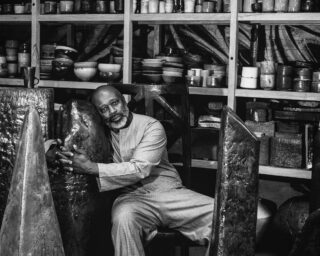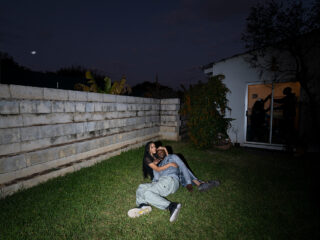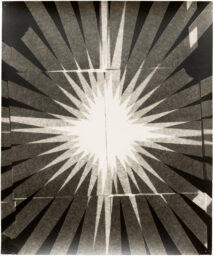Paul Pfeiffer on the Transformative Effects of the Pop Culture Image
In a conversation with Stanley Wolukau-Wanambwa, the multidisciplinary artist speaks about the politics of viral images and mass spectacle.
Paul Pfeiffer, Four Horsemen of the Apocalypse (30), 2015
Paul Pfeiffer’s practice spans sculpture, video, installation, and photography. His central material and concern over more than twenty years has been the photographic, televisual, and filmic image in the context of our mainstream habits of image consumption. Much of Pfeiffer’s work has centered on forms of racialized performance in sporting events like boxing matches and basketball and football games—sites of mass spectacle with deep and widespread cultural appeal. He has also made work in response to concert performances, and to iconic films or physical sites that have acquired a ubiquity for their connections to the visual vernacular of social life. Pfeiffer’s work has focused on the transformative effects of popular cultural images on our embodied and psychic experiences of the world. That work has developed in the context of his ongoing interest in the histories of globalized labor and racialized violence.
Stanley Wolukau-Wanambwa: Our conversation about your work began in the shadow of the summer of 2020, which is to say in the wake of the spectacular murder of George Floyd, and the broader mobilizations in support of the Movement for Black Lives and against the murder of unarmed Black and brown people, of whom there are far, far too many to name. This year also marks the release of a new piece in your series of video works, Caryatid [2015–20], which debuted online in the winter of 2020, streaming publicly for the first time alongside thirteen other works in the series. The Caryatid works have hitherto only been exhibited as videos on embedded screens that double as sculptural forms in your exhibitions, so I thought we might start by talking about the continuation of this series of works in the context of the digital circulation of images of racialized violence. How do the works engage the phenomenon of image circulation?
Paul Pfeiffer: Your question brings to mind the way images go viral today. Images are sent and received instantly by every handheld device around the globe in the blink of an eye. The recent electoral cycle in the US reveals the extent to which people live in siloed realities. The algorithmic filtering of information and viewpoints forms a structure of self-encapsulating feedback loops. Isolation bubbles. The algorithm works to identify patterns of behavior and reinforces them, making them stronger, pushing them to greater extremes, to the point where they become impossible to disrupt. In this hyper-mediated state, consumer appetites for the real in the form of simulacra grow more voracious.
What I’m engaging in my works is not just the circulation of images of racialized violence but its normalization. How can it be that the brutality of racial terror coexists so seamlessly and comfortably with the supposed civility and normalcy of everyday life? A series of savage, execution- style killings of beloved family members is ongoing in real time while people lounge on the grass chatting and laughing. We make a periodic show of public outrage or disavow complicity, but the murders continue. It’s business as usual. It’s like the postcards of vicious lynchings of Black men and women that were casually circulated not long ago, where white families are seen socializing their children at picnics in the park with gruesome bodies hanging overhead. The Caryatid series of videos, like the Four Horsemen of the Apocalypse [2000–18] photos, respond to the shockingly high threshold of acceptance for the normalization of anti-Black violence in American culture.

Wolukau-Wanambwa: I think what’s terrifying about the seeming paradox of your question [“How can it be that the brutality of racial terror coexists so seamlessly and comfortably with the supposed normalcy of everyday life?”] is that it reveals that that violence is constitutive of normalcy. Even the intensity of anti-Black violence as spectacle seems readily absorbable within the parameters of the normal for so many segments of society. The architectural theorist Reinhold Martin describes infrastructure—whether railroads, postal services, or financial markets—as something that repeats, and he argues that repetition is “not only sequence or meter; it is also sheer persistence.” I would argue something similar about anti-Black violence and violence against racial difference in the US more broadly: it serves an infrastructural function in the preservation of normalcy.
Of course we’re now speaking in the shadow of the armed insurrection against the certification of the 2020 US election at the Capitol on January 6, 2021, in which explosive devices were left at government buildings and weapons were fired by white rioters inside the Capitol on a day that left five people dead and hundreds injured. This was a white seditious riot against the votes of Black and brown people in Detroit, Philadelphia, Atlanta, Las Vegas, and Phoenix. Repetition abounds, in the guise of history, and already it seems that “the normal” will reassert itself. It began to do so in the manner that the Senate chamber restarted the certification process that same evening.
In the Caryatid pieces, there’s a palpable digital materiality to the flesh rendered in the image that speaks to post-processing and technological intervention, and that gives it a texture. Those processes of mediation are repeated in the structure of the piece, by virtue of it being looped. But repetition also figures in the logic of a boxing fight, where blows rain down on bodies persistently over time. I want to ask you about your use of the loop in relation to this question of media’s effects on feeling and behavior. Could you talk a little about that form of repetition in your practice and in these works specifically?
Pfeiffer: What draws me to explore the loop is the hypnotic quality of this simple form. There’s something irresistible and transfixing about looped, repeated images—also repeated sounds, words, phrases, etc. It’s something primal and intuitive, like a moth to the flame. We can think of it in terms of psychological resonance. Repetition is the telltale sign of hidden trauma, to use a critical framework drawing on the history of psychoanalytic literature. Repetition is the evidence of repressed experiences and memories too difficult to bear, so toxic that we try to forget them. We bury them. We send them underground, relegating them to the unconscious so we don’t have to see them or think about them anymore. But they always come back, usually as ghosts, nervous tics, and other disorders. That’s the repetition. We can’t explain the repetitive nervous tic or the insistent ghostly return of the deceased, because we’ve purposely buried or erased their root cause. This is the digital surface texture you mentioned, as well, the texture of post-production image manipulation. It appears as a glitch or ripple across the surface of the image, but in fact it’s a symptom or trace of the otherwise invisible hand of the editor. It also relates to the notion of infrastructure you referenced via Reinhold Martin—infrastructure as a foundational element of the built environment, systematizing routine functions to enable the more aspirational agenda of day-to-day activities. Infrastructure is the plumbing that drains our showers and toilets, also the high-speed internet cables piping bandwidth into our homes and work spaces. It’s what’s running underground. The fact that it’s hidden out of sight is what defines it as effective.
Another facet of the loop and its hypnotic effects relates to the more recent field of behavioral psychology, as distinct from psychoanalysis. I saw a shrink before who broke it down this way: unlike psychoanalysis, which is focused on investigating root causes buried below the surface, behavioral psychology’s focus is more pragmatic. It’s concerned with making changes to behavior in the here and now without the deep dive into root causes. From a behavioral perspective, the looped image, or any other repetitive signal, is a means to induce an alpha brain wave state, related to the state of meditation or deep inner focus in which the brain is most relaxed, open, and receptive to perceiving the fluidity and impermanence of all things. It’s the state in which we’re most receptive to rewiring old patterns of behavior, like using hypnosis to alter one’s automatic response to emotional triggers in order to quit smoking, or otherwise reprogram undesirable habits.

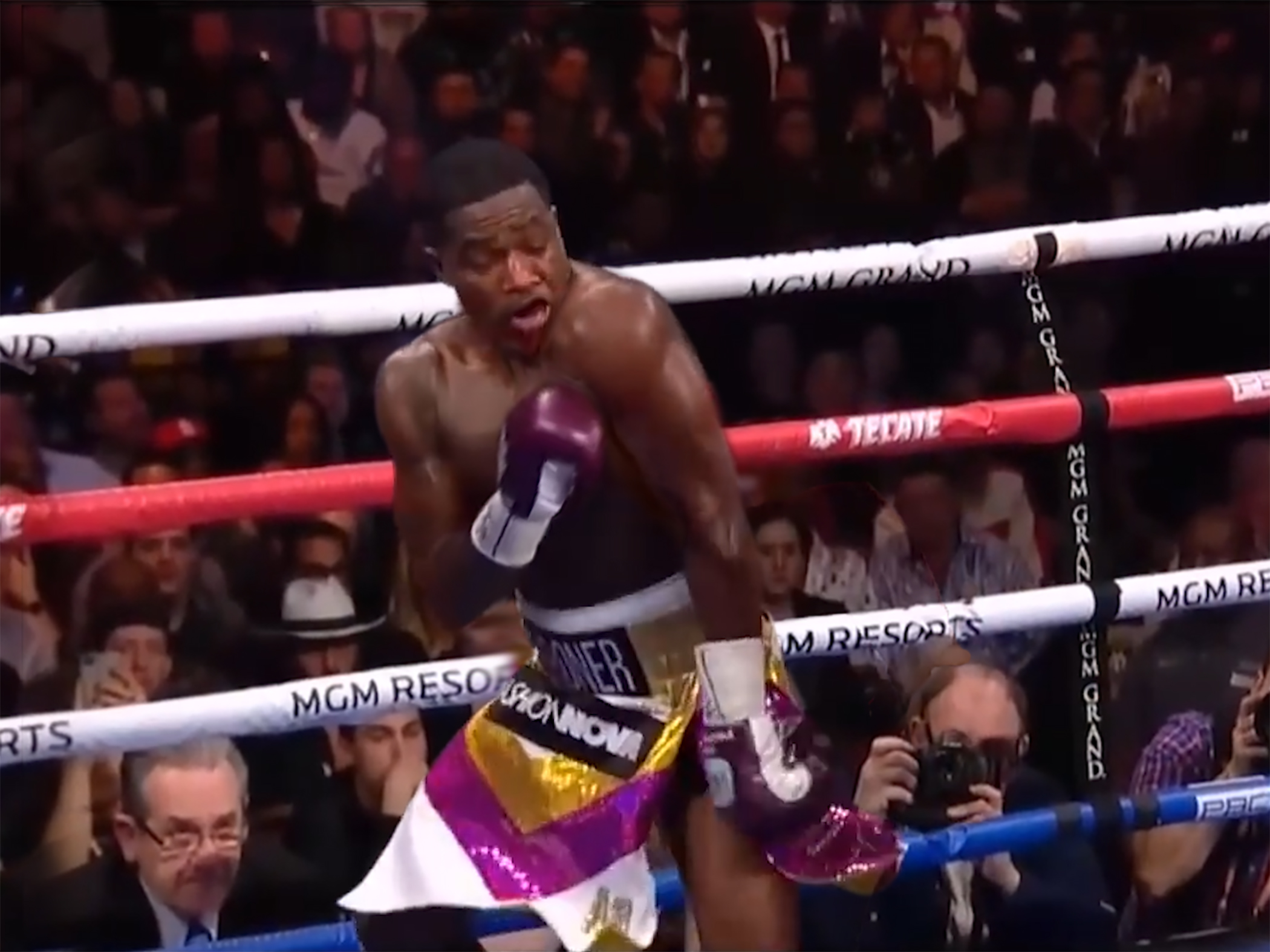
Wolukau-Wanambwa: There are such wonderfully opposing valences in those readings of repetition, which seem not only truthful but important to me. Repetition as pathology, but also repetition as receptivity. Staying with the most recent Caryatid piece, this is the first work in the series to have debuted specifically as a web-based image-object, isn’t it? The other works have been embedded within televisions or monitors that are treated sculpturally, often placed on the floor or protruding out of a white wall like miniature consoles. I’m interested in how this shift in the mode of delivery and display strikes you, and how you think about these pieces in the media environment of the web browser (whether on desktop, cellphone, tablet) as against the white space of the gallery. What changes in that shift for you?
Pfeiffer: The distinction you make between the white cube as a mode of delivery (of contemporary art) versus the circulation of images via the web and social media speaks to me of the condition of simultaneity that characterizes the mediatized environment. Multiple channels or platforms of display and distribution coexist simultaneously. They’re not mutually exclusive. We move in and out of them continually. This is reflected in the fields of journalism and broadcasting, for example, where multi-platform storytelling has become a common strategy. I think of it in terms of different time zones operating in parallel. Over the past year of Zoom it’s become second nature to negotiate time in a relational manner to allow people in different time zones to connect. The same is true of our capacity to inhabit multiple spaces simultaneously.
I don’t mean to deny the definitive influence of web-based and social media today. Just the opposite. My take on it relates to what activist journalist Maria Ressa has been saying about the nature of Facebook: she describes it as a form of behavior modification. It’s not just greater reach and speed of circulation that defines it. The impact goes deeper. Past a certain threshold, the speed and penetration of global networks in combination with the filtering power of algorithms exceeds the limits of human discernment. There’s a saying, the fish can’t see the water.
In the era of social media the invisible hand of the editor is evident everywhere, casting into doubt the very ground on which we stand, the ground of civil society. We’ve only just begun to wrap our brains around the situation. The 2016 Facebook–Cambridge Analytica data scandal, in which the personal data of millions of Facebook users was harvested and used to attempt to influence voters, is one glaring example. Others include the role of social media in the ongoing Rohingya genocide in Myanmar, or the spin war surrounding extrajudicial killings in the Philippines, not to mention the last four years of MAGA Twitter posts culminating in the mess of COVID-19 and the 2020 election cycle. It’s no coincidence that QAnon and other outlandish claims compete for bandwidth in the public sphere. A generalized intuition prevails that things are not what they seem.
Which brings us back to the looped image and its multiple valences. To invoke the shadow of the summer of 2020 and the murder of George Floyd is to acknowledge the primacy of the digital circulation of images of racialized violence today, with its opposing valences of repetition as pathology and repetition as receptivity. You could argue that the viral circulation of such images on social media serves to normalize the violence, making it okay, though the mass uprisings it has galvanized suggest other possible outcomes. A counter argument is that the proliferation of cameras, screens, and networks inadvertently brings to the surface an otherwise repressed, psychopathic infrastructure of anti-Black violence at the foundation of civil society that normally goes unacknowledged and unspoken (at least for some), and in bringing it to light, renders it palpable and intolerable.
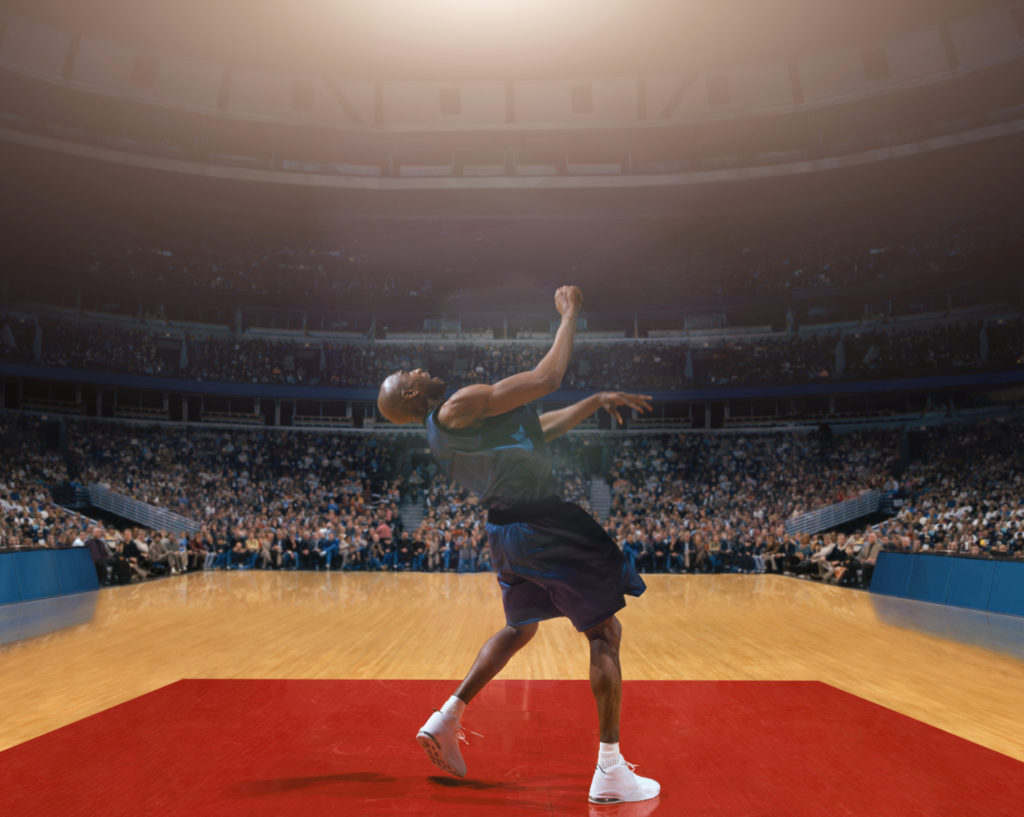
Wolukau-Wanambwa: I think that the other series of works you’ve made that most powerfully connects to the murder of George Floyd—I would call it a public lynching—are your Four Horsemen of the Apocalypse photographs. In them, you take press images of emphatic moments of athletic accomplishment by Black or African American NBA players, scan the photographs and painstakingly erase the net and its physical supports, along with every other player and the basketball itself, leaving one single Black figure in space. The players glide or float in tensed yet graceful exertion, and when they float above the ground, they sometimes resemble the desiccated figures of lynched African American men strung from telegraph poles and trees across the United States. Could you talk a little about the evolution of that series, the method of its making, and the various valences at play in the works?
Pfeiffer: What’s essential for me is that the series begins with images from the NBA press archive. The archive dates back to the NBA’s founding in 1946, and now includes mil lions of pictures. Every year in the run-up to the NBA Finals the archive expands to include tens of thousands of new shots taken during the current season’s games. When I sift through the archive I’m looking for that one-in-a-million image that contains certain chance elements necessary for me to do my work.
The edited pictures bring to mind many things, as you say, but they are first and foremost rooted in the everyday context and populist language of spectator sports. This context is purposely encoded in the works’ visual DNA so that they speak in a voice that is familiar, commonplace, even banal. At the same time, by subjecting the source material to extensive editing in Photoshop to remove jersey numbers, team logos, and other details, they are prevented from signifying in the way they were originally intended. Instead, they speak more or less obliquely in an open-ended mode, their signifying process—their identity as it were—purposefully rendered incomplete. In a way they’re like Rorschach tests. What they end up saying to the viewer differs greatly depending on the person who encounters them and the particular life experience they bring with them to the encounter.
There are viewers who grew up in the culture of basketball, especially street basketball, who see the transfiguration of a scene they know intimately. There are many sports fans and art collectors who can identify the player without the benefit of jersey numbers or team logos, even with the figure’s back to the camera. Others see the Crucifixion of Christ and other themes from the history of religious painting. And as you point out, there are ghosts or afterimages of the photographic history of the public lynching of African American men. This last one has always been, for me, a particularly potent, provocative aspect of the images in the Four Horsemen of the Apocalypse series. Which is why it’s always seemed poignant to me how seldomly it’s been discussed explicitly by commentators on the series. Almost never. Until now. You’re really the first to focus on it explicitly with me in a conversation format.
I don’t mean to be disingenuous on this point.
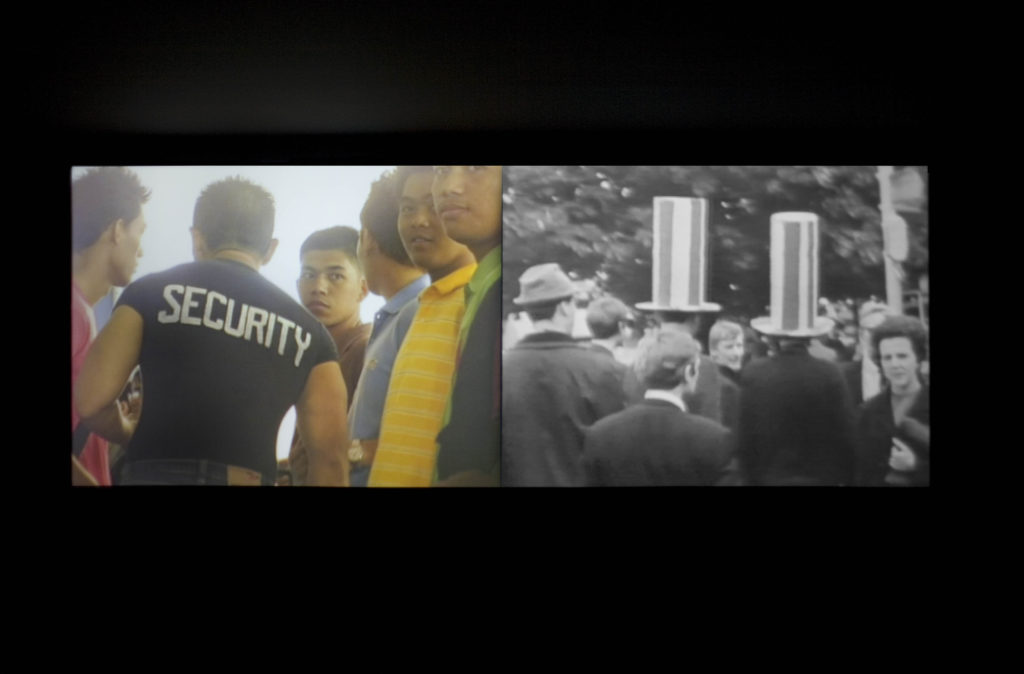
All images © Paul Pfeiffer. Courtesy the artist and Paula Cooper Gallery, New York
Wolukau-Wanambwa: Not at all! That silence is something I’ve noted in the archive of writing and discussion about your work: the absence of an investigation of forces of racialization within examinations of the material you work with, and the kinds of complex utterances and experiences that your work produces. I want to talk more about the resonance of lynching in the Four Horsemen series, but I think that to do so productively requires what might seem like a detour.
So in your extraordinary installation The Saints [2007], which comprises a seemingly empty room filled with the rhythmic sounds of a crowd watching a football match and chanting songs in support of England’s national team, we find, at the far end of vast, empty, negative space, a tiny white console displaying looped black-and-white footage of one football player running around otherwise empty grass. It’s a video of the match in which England famously won the World Cup for the first and only time in 1966. Around the back of the wall that hosts this tiny console, there’s a black box space in which a two-channel video shows a large audience of Filipino men and women watching that match projected in an IMAX movie theater, and chanting along as “fans” in rhythmic fidelity to the original audience.
In this piece, as in your Vitruvian Figure [2008] piece, members of a racially distinct globalized audience are the principal, unheralded, and essential agents of spectacles of white national identity. There’s an ecology of production at stake that’s globalized and racialized in important ways: a division of labor in the production of spectacles for mass consumption that fortify expressly nationalist models of identity through athletic achievement. These are the proving grounds of the nation-state as a virtuous project: the Olympics, the World Cup, the NBA “World Championships.” At the root of the production of these scenes, and of the affects that seek to bond their recipients to the national image and the project of the white nation-state, we find Black and brown bodies: the crowd in Manila who mimic the English fans, the mass of Filipino men and women who made the stadium seats for Vitruvian Figure, the Black and African American athletes who keep the NBA alive . . .
I guess I think that you’ve partly been making work these many years that undermines the notional centrality, authority, and entitlements of the white spectator as the assumed audience for performative expression. And I think your critics seem to have totally missed that that’s a central part of the work. Am I way off base? If your work has frequently been engaged with the spectacle, the identity of the spectator has not been fixed and monolithic, but that seems not to have been thoroughly accounted for in the appreciation of your work . . .
Pfeiffer: You’re not off base at all. But then the question of the spectator’s identity is no small thing! Isn’t it one of the fundamental questions we’re facing in this moment of global reckoning? We’re coming full circle to the subject of infrastructure. We’re in a moment in which, for some people, things that have long been buried underground are being brought to the surface and scrutinized.
An analogy comes to mind relating to the methods of film and video postproduction. One of the primary operations that occurs in the film editing suite is synchronization, wherein different channels of sensory information are brought into alignment by the editor. For example, sound is synced to image, which is to say audio footage and video or film footage that were captured separately—often far apart from one another in location and time—are synced together, giving the impression of a unified whole from a single source. For example, the sound of a knock on the door is aligned with a close-up of a hand knocking on a door’s surface to create a unified impression of the gesture. This is done with the viewer in mind, knowing that to sync sound to image in this way streamlines the viewer’s reception and understanding of the scene. The point is to remove any disjunctions, gaps, or inconsistencies that would disrupt the intuitive flow of perception and cognition.
Syncing in this vein is fundamental to the post-production workflow, and mirrors a certain understanding of the way the brain works generally to process information. For me, the post-production editing suite is worth considering as a metaphor for reality itself in the age of social media. Instant by instant, the mind is at work processing bits of data from the different sense organs and synthesizing these fragments on the fly into unified objects. For example, a multitude of disparate sensations—the color red, round shape, smooth texture, sweet smell, sweet taste, crispy sound—come together in the mind as the thing we call apple. I’m borrowing this understanding of the nature of cognition from the field of emergence or systems theory. The way in which objects emerge from sense fragments can be applied to an understanding of the nature of memory, or the process of narration, or the formation of individual and group identities. None of these things pre-exist as unified wholes. They emerge through an aggregation of fragments in the mind of the perceiver.
In the editing suite, there’s a primary relationship between the spectacle under construction, the craft of the editor, and the identity of the spectator. Every editing decision, big or small, is made in anticipation of the way the viewer will receive the image and intuitively “get it.” In this way, the image, the editor, and the viewer are all counterparts in the process of creating meaning. None of these roles is passive. Spectators don’t just passively consume the spectacle, they are constituted or transformed by it. Conversely, the editor isn’t just making subjective decisions, but calibrating every nuance to a set of assumptions about who the spectator is and how they will receive their meaning. In this light, the 1966 World Cup is emblematic of the way a sporting event can be an exercise in nation-building—to repeat your formulation, the affect that seeks to bond recipients to their national image and the project of the white nation-state. To speak of flag-waving and national anthems sung before the game merely scratches the surface of the procedure. Its primary expression was the roar of the crowd as a hundred thousand fans exchanged chants and songs in support of England and West Germany barely a generation after WWII.
The introduction of the hired crowd of Filipino voices in an IMAX movie theater in Manila was meant to cut across the grain of the British nationalism permeating every aspect of the event in Wembley Stadium. What was essential to me in the remix was the incongruity of the doppelgänger multitude. As you point out, the relationship of the Filipino crowd to the found footage from 1966 remains unclear, even inscrutable. I thought of it as a kind of speculative time travel through a wormhole between two unrelated points in space and time through the illusion of synchronization, not unlike the knock on the door.
During the planning of The Saints, when I proposed the scheme to outsource the production of crowd sounds for the installation, the suggestion was made by the project’s commissioners to assemble the hired crowd in India because of the historical connection to the British Empire. I refused this suggestion in favor of the Philippines for multiple reasons, not the least of which was the lack of historical association. This gets to the heart of the question you asked about the identity of the spectator in relation to my work. New ontological models are emerging that serve to thoroughly deconstruct essentialist notions of identity aligned with the boundaries and authority of the white nation-state, along with the entitlements of citizenship for which it claims to stand. As we cross this threshold, what new understanding of subject formation will take its place? The Saints performs the vision of a form of subjectivity no longer compelled to come together as a unified whole.
This interview will be published in The Lives of Images, Volume 1: Repetition, Reproduction, and Circulation (Aperture, 2021), the first in a six-volume set of contemporary thematic readers.
Register for The Lives of Images Symposium Series (August 31–September 2), presented by Aperture and ICP, featuring conversations with Erika Balsom, Lucas Blalock, David Campany, Aria Dean, Jodi Dean, Paul Pfeiffer, Vivian Sobchack, and Stanley Wolukau-Wanambwa.
